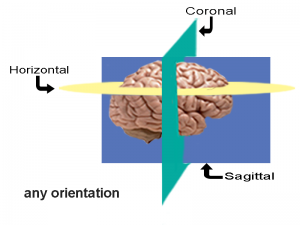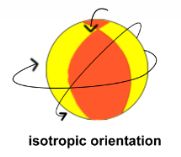The microscopic characteristics of tissue and organs can be quantified using unbiased stereological probes. A probe is a set of virtual shapes that interact with the tissue that is being studied. An event is the interaction of the probe with the characteristic, for instance if a virtual sphere being used as a probe is intersected by a string whose length is being probed, that intersection is the event. Probes have a set of rules that are followed while marking events to avoid bias. First order stereology probes estimate number, length, surface or volume. Second order probes make estimates about the relationships among these characteristics. When choosing a probe you have to decide:
- What are you trying to estimate?
First Order:
REGION (e.g., cortex)
VOLUME OR CROSS-SECTIONAL AREA
PARTICLE (e.g., cell)
Second Order:
- How will isotropy of interaction between the probe and the tissue characteristic be assured?
1. Can oriented or preferential sections be used? An oriented section could be horizontal, coronal, sagittal, or any thing in between; it is usually sectioned the way the investigator can ‘read’ the tissue the best. Throughout this site we will use this symbol to show that oriented sections are compatible with the probe and allowed:
2. Does the probe require vertical sections? A vertical section has two randomized planes. This symbol denotes that vertical sections are required:

3. Does the probe require isotropic sections? Isotropic sections are the hardest to ‘read’ because they are randomized in three planes:
4. Can ‘flat’ preparations such as at the bottom of petri dishes be probed, or thin sections, or does the probe require thick sections? By thin sections we mean a few microns thick or so, and by thick sections we mean thick enough to fit an isotropic probe and any needed guard zones. Please see the individual probes for details.

Sponsored by MBF Bioscience developers of Stereo Investigator, the world’s most cited stereology system